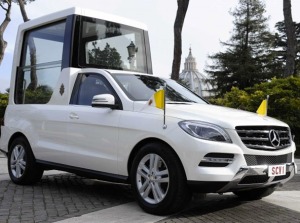Reblogged from Open Transportation, February 13, 2013:
Still under the radar in most places that are not our classroom, open data can be a scary thing. To many of its fans, Open Government is the solution to creating greater and more impactful civic engagement; getting the uninvolved involved and creating a two-way street for government and the public to get things done. The Open Government Partnership is a step in the right direction to creating this dialogue, but at this stage, it is merely a vision. To create a global open system will take more than getting countries to sign on to a non-binding agreement – the real change needs to start at the local level, with regions, cities, villages, groups and individual citizens embracing open data and making the best use of it for themselves.
Common sense dictates that each government that has signed on to the OGP will approach open data differently. How they present their data, what kind of data is made available, or simply how they get the public to embrace the general concept, will all vary by country. Here in the US where the words transparent and efficient fly out of our mouths every time we try to talk about the future, Open Government means something completely different than it does in most other countries around the world. For Russia, Open Government means involving a larger group of stakeholders in the decision-making process, giving the public an opportunity to be a part of political dialogue, instead of being at the tail end of it. It also means addressing issues facing the nearly ignored middle class and crowdsourcing legislative ideas. Since the Open Government initiative was introduced in Russia just over a year ago, a good deal of progress has been made, but Russian citizens still remain extremely skeptical. While many citizens are not sure that opening up data to the public will have any real, let alone positive, impact on their lives, most people do not understand what the concept even means.
A world away here in New York City, a lot of open data talk revolves around transportation and the myriad possibilities that it presents. In Russia, very much in its nascent Open Government stage, things like improving the state internet portal and increasing support for socially oriented nonprofit organizations take a front seat. This simply means that it may take time for the Russian government to fully identify and appreciate the possibilities for open data to create smarter transit applications and more interactive maps for its citizens. Russia’s top five priorities for Open Government make no mention of transportation, but the concepts highlighting competition, entrepreneurship and the promotion of openness and accountability are a great start. Working to improve the “delivery of key services, transform social relations, expand rights and opportunities of individuals and communities,” Russia’s OGP plan has all the right ingredients for transportation innovation down the road.
To be fair, the National Action Plan for the US does not mention transportation either, but it does specify initiatives to improve public services; so perhaps both plans could benefit from more attention to detail. On the bright side, and in breaking down impact on the regional and municipal level, smaller governments in Russia are beginning to utilize newly open transportation data to improve the lives of their citizens. The city of Moscow has introduced a portal called “Moscow Roads” that enables citizens to provide ratings and feedback on road conditions in their city. This information is not only useful for making quicker repairs, but also for evaluating the performance of the contractors behind those repairs, to make better business decisions in the future. This is promising information, especially coming out of a city that ranks third in the world for worst traffic jams. So while I would have liked to see some mention of transportation in Russia’s Action Plan, I also understand that in a time when you can be arrested for hooliganism, innovation in transportation may not be the most important item on the agenda.



